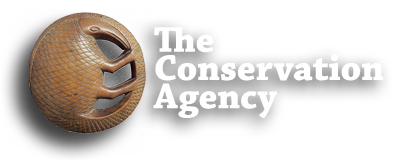The Conservation Agency is a scientific, non-profit, 501(c)(3) organization dedicated to the conservation of natural biodiversity: the world’s fauna and flora. We are distinctly different from the many other fine conservation organizations because we concentrate on scientific research and publication of results, usually in peer-reviewed journals. Our efforts can be divided into two broad, overlapping areas:
Exploration and Discovery We head out into the field, often to remote corners of the world, searching for new species, lost species, critical habitats, and insights into ecological relationships. We do population assessments, animal behavior research, and recovery plans. We get muddy, or sandy, or sweaty, or sometimes thoroughly chilled – or all of those things. We catch animals, collect plant specimens, and document habitats. We write up our results and publish them.
Conservation and Management Based on our fieldwork, we produce management plans for individual species, particular habitats, and even whole ecosystems. We get this information into the hands of governmental agencies, land acquisition organizations, and stewardship groups. We even directly manage some sites ourselves, such as Snake Acres in the Lower Florida Keys and the Guana Island Wildlife Sanctuary in the British Virgin Islands.
Our efforts begin at home in southeastern New England, extend across North America, and include the West Indies, East Indies, China, Australia, and sometimes Africa: from Nantucket to New Caledonia, Newfoundland to Tasmania. Our list of over 450 publications provides an overview of our accomplishments and activities
Facebook Feed


